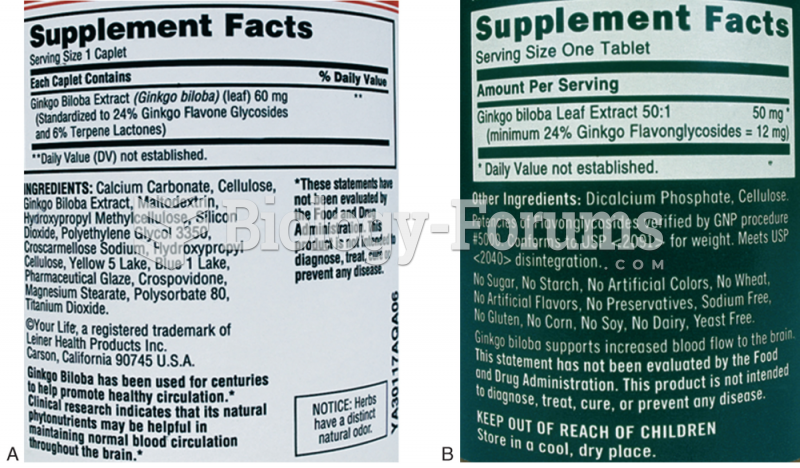Answer to Question 1
4
Rationale 1: Headache, dizziness, sweating, and agitation, which are signs of serotonin syndrome, are not the result of an interaction between Ginkgo biloba and warfarin (Coumadin).
Rationale 2: Hypoglycemia (blood glucose of 56) is not the result of an interaction between Ginkgo biloba and warfarin (Coumadin).
Rationale 3: An international normalized ratio (INR) of 3.0 is within a normal range.
Rationale 4: Ginkgo biloba will interact with warfarin (Coumadin) to promote increased bleeding potential that may lead to petechiae and bleeding from the gums.
Global Rationale: Ginkgo biloba will interact with warfarin (Coumadin) to promote increased bleeding potential that may lead to petechiae and bleeding from the gums. An international normalized ratio (INR) of 3.0 is within a normal range. Hypoglycemia (blood glucose of 56) is not the result of an interaction between Ginkgo biloba and warfarin (Coumadin). Headache, dizziness, sweating, and agitation, which are signs of serotonin syndrome, are not the result of an interaction between Ginkgo biloba and warfarin (Coumadin).
Answer to Question 2
1,2,3
Rationale 1: Addiction depends on multiple and complex variables. Genetics plays a part, but many other factors also contribute to addiction.
Rationale 2: Counselors encourage users to stop associating with social contacts who shared the substance abuse to lessen the possibility for relapse.
Rationale 3: The therapeutic use of drugs rarely causes addiction when used according to accepted medical protocols.
Rationale 4: The drug experience may bring feelings of pleasure or well-being. The patient may find achieving this feeling to be worth repeating, leading to addiction.
Rationale 5: This patient recognizes that taking pain medication even when in not pain leaves one vulnerable for addiction. The therapeutic use of drugs rarely causes addiction when used according to accepted medical protocols.
Global Rationale: Addiction depends on multiple and complex variables. Genetics plays a part, but many other factors also contribute to addiction. Counselors encourage users to stop associating with social contacts who shared the substance abuse to lessen the possibility for relapse. The therapeutic use of drugs rarely causes addiction when used according to accepted medical protocols. The drug experience may bring feelings of pleasure or well-being. The patient may find achieving this feeling to be worth repeating, leading to addiction. This patient recognizes that taking pain medication even when in not pain leaves one vulnerable for addiction. The therapeutic use of drugs rarely causes addiction when used according to accepted medical protocols.







